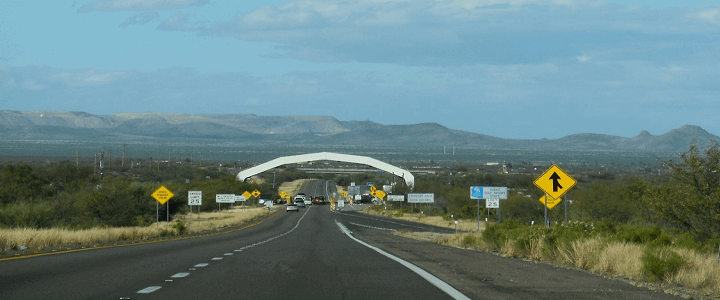Alarmed by a “caravan” of migrants making its way from Honduras through Mexico to the border with the United States, President Trump said on Tuesday afternoon that he would deploy the military to the border. “Until we can have a wall and proper security, we’re going to be guarding our border with the military,” Trump said. “That’s a big step. We really haven’t done that before, or certainly not very much before.”
I won’t even address the obvious answer that with friendly Republican governors in charge of two of the four border states, using the National Guard in a state capacity would largely meet the president’s intent. Nor will I rehash how both Presidents Bush and Obama deployed troops to the border, albeit in support of the Border Patrol.
Suddenly Tuesday afternoon, the internet was full of Google legal scholars, who until this morning couldn’t spell “posse comitatus,” explaining how Trump was exceeding his legal authority. But unfortunately, just as Arkansas Gov. Orval Faubus learned in 1957, the Posse Comitatus Act is not absolute.
Origins of the Posse, and the Act
We’ve all seen the Western where the sheriff deputizes the townspeople to join his posse to catch the bank robbers trying to escape across the desert. This stems from the concept in English Common Law of posse comitatus, literally “be accompanied,” which gives local law enforcement the power to enlist citizens to assist the police in times of emergency.
The Posse Comitatus Act, originally enacted in 1878, prohibits using the Army and the Air Force in a law enforcement capacity — in most cases. Congress enacted the law as part of the settlement of the most contentious presidential election in American history. The 2000 and 2016 elections have nothing on the election of 1876, where dispute over 20 southern Electoral College votes ensured neither Democrat Samuel J. Tilden (the winner of the popular vote) nor Republican Rutherford B. Hayes gained a majority.
In exchange for ending Reconstruction, Southerners agreed to support Hayes. Part of the settlement involved ensuring that federal troops would no longer be used as an occupying force as they had between 1865 and 1877.
The Act is very short and direct. Currently encoded at 18 U.S.C. 1385, it says, in total, “Whoever, except in cases and under circumstances expressly authorized by the Constitution or Act of Congress, willfully uses any part of the Army or the Air Force as a posse comitatus or otherwise to execute the laws shall be fined under this title or imprisoned not more than two years, or both.”
But the way the act is worded, there are two large loopholes the president can use to get his way on the border.
Use the Insurrection act, or the Marines
As you can see, the law explicitly covers only the Army and the Air Force. The Navy and the Marine Corps are only barred from domestic law enforcement by virtue of regulations enacted to comply with the spirit of posse comitatus. The Secretary of Defense could revoke or waive those regulations at any time. Were he to do so, there would be no legal barrier to deploying Marines to the Mexican border to prevent unauthorized crossings.
Mind you, that doesn’t mean such a deployment would be a good idea or a wise use of military power. But it would be legal.
The president’s other option is to use the loophole that President Dwight D. Eisenhower used to force the city of Little Rock, Ark. to desegregate its schools. In September of 1957, with mobs preventing the students who would become known as the Little Rock Nine from attending Little Rock Central High School, and the Arkansas Army National Guard refusing to enforce the federal court order to integrate, Eisenhower sent the 101st Airborne Division to end the standoff.
In his Executive Order deploying the military to Little Rock, Ike used the law’s exemption for an action “expressly authorized by… Act of Congress,” specifically in this case, the Insurrection Act. In 1807, Congress enacted the law, which although modified over the years survives largely as it did in Jefferson’s day.
Chapter 15 of Title 10 of the U.S. Code gives the president the power to use the armed forces when “unlawful obstructions, combinations, or assemblages, or rebellion against the authority of the United States, make it impracticable to enforce the laws of the United States in any State by the ordinary course of judicial proceedings.”
In reality, the “caravan” making its way through Mexico is a protest, not an attempt to storm the ramparts. But as we saw in Israel over the weekend, what is billed as a protest can be cover for a riot. While I don’t believe that is the intent here, there appears to be nothing preventing the president from declaring the group to be an unlawful assemblage that seeks to subvert the country’s laws.
Extending that declaration to all illegal border crossings in general would be a stretch that immigration advocates would quickly challenge in court, but the administration has a case.
Using the armed forces to control illegal immigration is certainly controversial, and most likely ill-advised. But sorry to disappoint, at least in the short term, it’s probably legal.




